British longhair cats are loyal, loving pets with sweet faces and relaxed attitudes. Learn more about life with this friendly, fluffy cat breed.
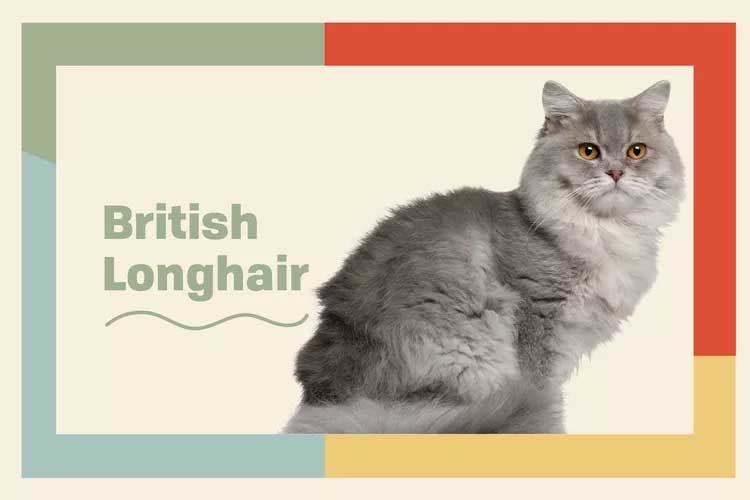
British Longhair Overview
| OFFICIAL NAME | British Longhair |
| COMMON NAME | British Longhair |
| PET HEIGHT | 12 to 14 inches |
| PET WEIGHT | 8 to 16 pounds |
| LIFESPAN | 12 to 15 years |
| GOOD WITH | cats, children, dogs, families, seniors |
| TEMPERAMENT | affectionate, sociable |
| INTELLIGENCE | high |
| SHEDDING AMOUNT | occasional |
| PLAYFULNESS | low |
| ENERGY LEVEL | lazy |
| VOCAL LEVEL | frequent |
| COAT LENGTH | long |
| COLORS | black / ebony, blue / gray, chocolate / brown / sable, cinnamon, cream / beige / tan, fawn, lavender / silver, lilac, red / orange, white |
| PATTERNS | bi-color, solid, tabby |
| OTHER TRAITS | easy to train, friendly toward humans, friendly toward other pets, friendly toward strangers, good for first-time pet owners, good lap cat, high potential for weight gain, requires lots of grooming, strong loyalty tendencies, tolerates being alone |
The British longhair is a sweet tempered, round-faced teddy bear of a cat. These fluffy felines originated in Britain and are a cross between the British shorthair and Persian cat breeds. The British longhair has technically been around for centuries, but has only recently been recognized as its own breed.
These adorable cats are affectionate, loyal, and undemanding. If you're looking for a family cat or devoted companion to keep you company without being especially needy, the British longhair makes a great choice.
British longhair kittens from a reputable breeder typically cost between $800–$1,200 depending on pedigree.
Appearance
British longhair cats are medium-sized with long hair and a pleasant, round face. Their large round eyes, sweet expressions, and plush coats give this breed an adorable charm. Underneath all of their fluff, these cats have muscular, sturdy bodies. British longhairs typically weigh 8–16 pounds, with males usually weighing more.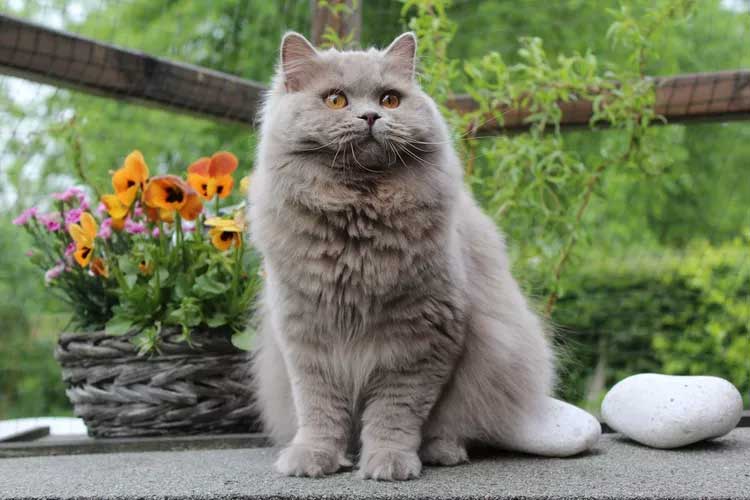
British longhair coats are dense and straight, standing away from the body to make these cats appear larger than they truly are. Their coats are also soft, thick, and come in many colors including black, lilac, chocolate or golden. They can have a bi-color, ticked, or colorpoint pattern as well. British longhair cats shed lightly in comparison to other longhaired breeds, but they do have a thick undercoat.
The British longhair is often compared to the British shorthair and Persian cat in appearance, and for good reason—the British longhair follows the same breed standard as the British shorthair, except for their long, soft coat. The British longhair's gorgeous mane is the result of the Persian cat side of their genealogy.
Temperament
These sweet cats are as pleasant as their smiling faces would lead you to assume. British longhair cats are known for a mild, calm demeanor and tolerant attitude. These cats don't get worked up easily—some might even call them lazy! While they certainly behave in the typical playful kitten fashion at times, they're significantly less active than most cat breeds and become less active with age. They also sleep quite a bit, even by cat standards.
But these loving cats are far more than just couch potato companions. They're incredibly intelligent, social, and affectionate. The British longhair is a loyal breed that loves people and is tolerant of most environments.
Though they're very social, these cats also have an independent streak and often feel fine doing their own thing. That's not to say these cats will always leave you alone—in fact, they've been described as little "private investigators". True to the cats of pop culture, these felines are quite curious. Don't be surprised to find these cats pawing through your personal items or observing from nearby to see what you're up to.
British longhair cats are loving and tolerant with children, but they really don't like to be picked up. Parents will need to take time to teach little ones not to scoop up these adorable cats, and to meet them on the floor for petting and playing instead.
Living Needs
Thanks to their laid-back temperament, the British longhair is suited to a variety of living environments. Their gentle, easygoing attitudes make them patient and loving pets for families with young children and frequent guests. These friendly felines are social and adaptable to change, tolerant of curious toddlers and noisy dinner parties.
They're far from clingy, and they're fine to be left alone while you head off to work or social activities. That independent spirit also means the British longhair can be a bit strong-willed. They prefer to do things on their terms and often won't respond to owners initiating play when they'd prefer to lie around. However, this doesn't mean your British longhair cat wants nothing to do with you. On the contrary, you will need to make time to show them your love and affection. Lots of cuddles, attention, and the presence of other pets will keep them from getting lonely.
These cats love to chat and will strike up little conversations with you frequently to let you know they're hungry, thirsty, or just to get your attention. If you have easily irritated roommates or live in an apartment with thin walls, this breed might not be the best fit.
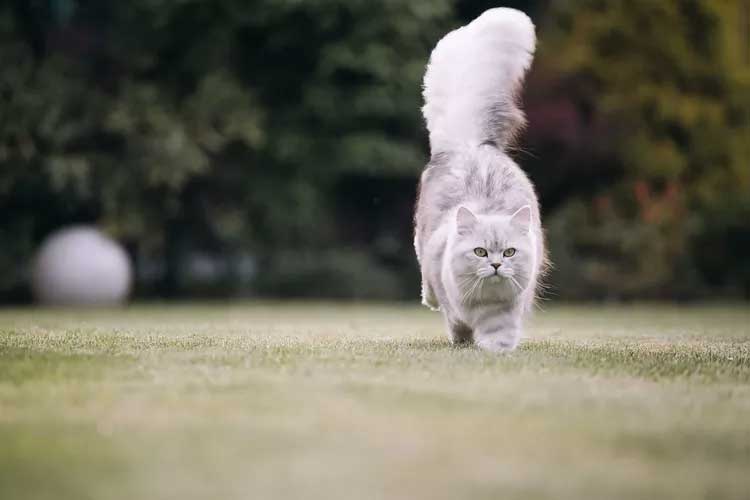
If you're looking for a kind, cuddly companion who can handle many different lifestyles and living spaces, the British longhair is a great fit. This laid-back cat is well suited to family life, frequent travels, and most other living situations, as long as they get plenty of love and care.
Care
Grooming can be a task, thanks to this breed's signature long locks. You will need to brush them a couple of times a week with a bristle brush, working gently and in small sections. Bathing needs are infrequent, since the British longhair mostly takes care of that task himself. Because of all of this self-grooming, your British longhair cat is prone to swallowing a lot of hair and developing hairballs. Help your cat out by brushing him more frequently or offering hairball relief treatments.British longhair cats tend to be a little bit lazy, and owners will need to motivate them to move. Encourage play often, provide cat trees for climbing, and interactive cat toys for playing.
"Weight management is very important with these cats because they tend to be less active as adults as compared to other cat breeds," says Natalie L. Marks, DVM, CVJ and Royal Canin veterinary partner. "They are prone to being overweight so daily exercise is a must."
Because they're intelligent, these cats are typically easy to train to do simple tasks like using a litter box or a scratching post. These food-loving cats will always appreciate a treat to reward good behavior, and they can even learn fun tricks with the right motivation.
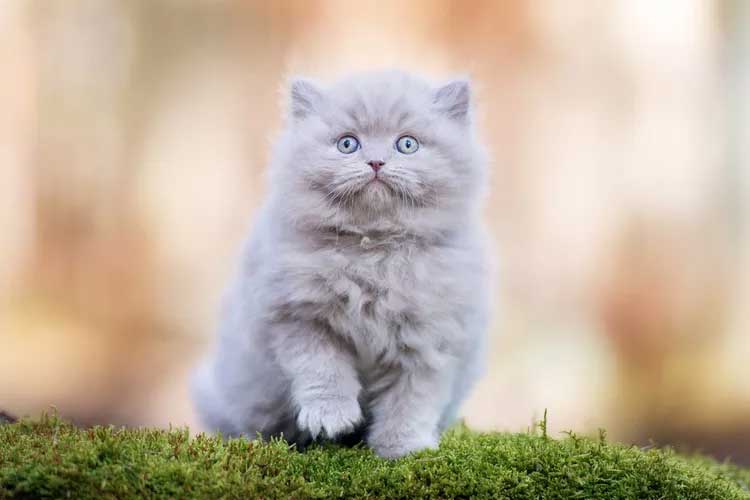
Socialization should be simple with this easygoing breed. British longhair kittens introduced to people and pets early are usually easy to get along with and welcoming of unfamiliar faces.
The British longhair should be fed a diet of high-quality cat food approved by your vet. Look for ingredients with mainly animal-based proteins. Your British longhair can be fed dry or wet food. This breed is prone to obesity, so it's important to monitor their food intake.
Health
British longhair cats aren't more prone to illness than other cats, but they do have some incidence of health issues. This breed has an expected lifespan of 15–17 years."It's important to check for polycystic kidney disease, where cysts develop on the kidneys causing decreased function, and eventually, failure," Marks says. "Now, DNA tests are available to detect the risk of this disease in the parents and this should be screened ahead of time. This disease is also very common in the British longhair's Persian predecessors."
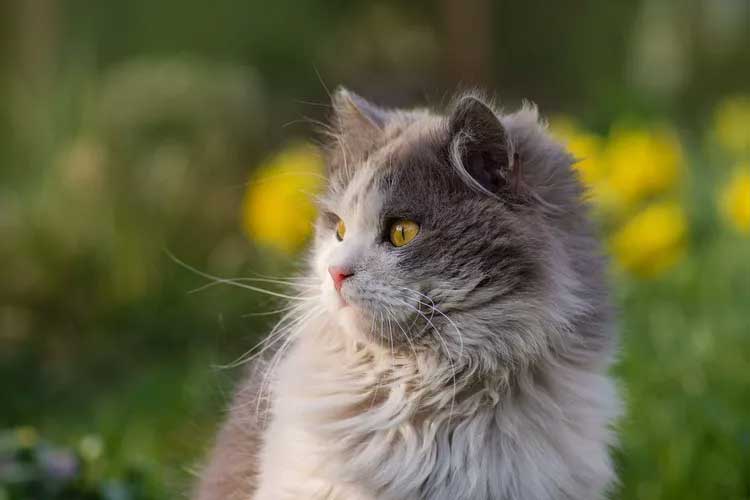
Responsible breeders will test kittens for genetic health issues, but it's important to keep regularly scheduled vet appointments and take the advice of your cat's veterinarian. Health issues can develop later in life and will need to be monitored.
History
The British longhair originated in Great Britain in the early 20th century and is the result of crossing British shorthair and Persian cats, according to The International Cat Association (TICA). British shorthair cats had long been crossed with Persians, but resulting cats who displayed the Persian's longhaired gene were considered unusual.Because the breed has only been bred for their specific traits recently, they have achieved breed status in recent history. Much of the history of the British longhair is associated with their relation to their namesake and ancestor, the British shorthair.
Fun Facts
The British longhair was recognized as a breed by TICA in 2009. Some other registry organizations still do not consider the British longhair their own breed.Despite their similarities, the British longhair isn't truly a longhaired version of the British shorthair. These cats have a distinct facial structure and temperament differences, thanks to their Persian influence.